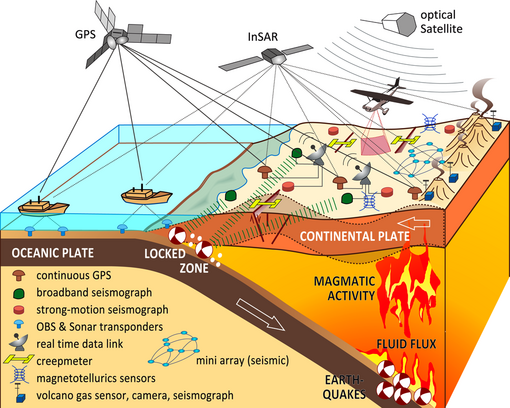Introduction
IPOC (Integrated Plate Boundary Observatory Chile) is a European-South American network of institutions and scientists organizing and operating a distributed system of instruments and projects dedicated to the study of earthquakes and deformation at the continental margin of Chile.

IPOC aims to reduce vulnerability to geological hazards by improving the scientific understanding of hazardous events through long-term observation and scientific collaboration. IPOC fosters research across disciplines, including geology, seismology, geodesy, volcanology, geomorphology, and georesources.
Subduction zones host the gravest of natural hazards. They produce the largest known earthquakes that regularly trigger devastating tsunamis. Most active volcanoes hem their margins. Earthquakes, tsunamis and volcanic eruptions have inflicted some of the most far-reaching natural catastrophes on humankind. Chile, with its 1000s-kilometer-long subduction margin, is particularly exposed to these hazards.
IPOC is dedicated to
- Push new scientific discoveries through high-quality data and long time series
- Develop and transfer timely scientific knowledge about earthquakes, tsunamis, and volcanic crises
- Develop sustainable long-term monitoring strategies
- Assemble an international network of researchers fostering an integrated multidisciplinary collaboration
- Train the next generation of geoscientists on hazard assessment





